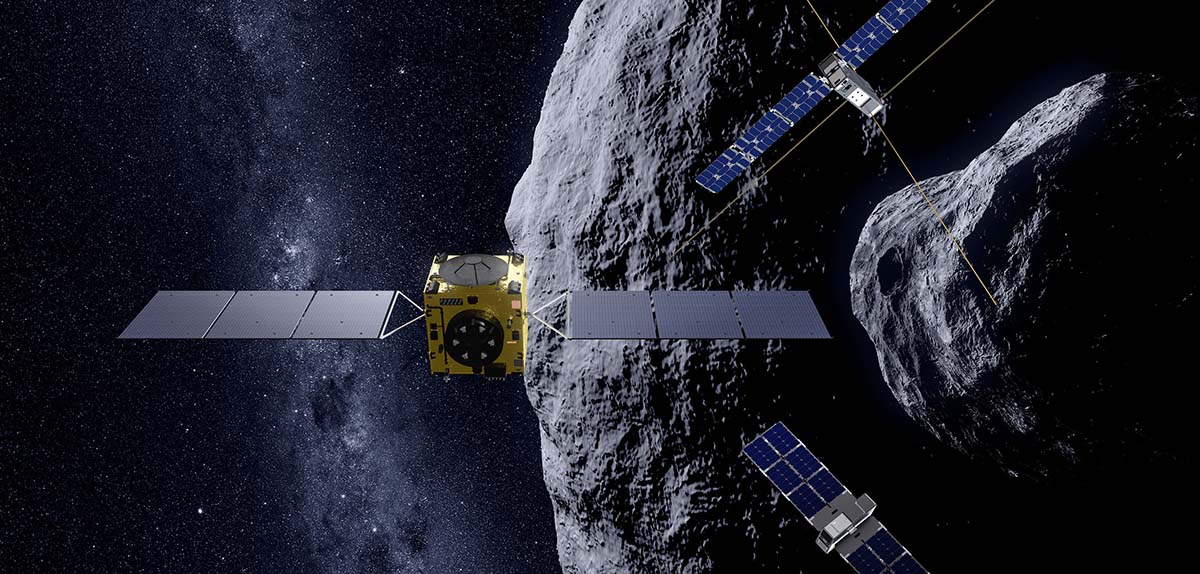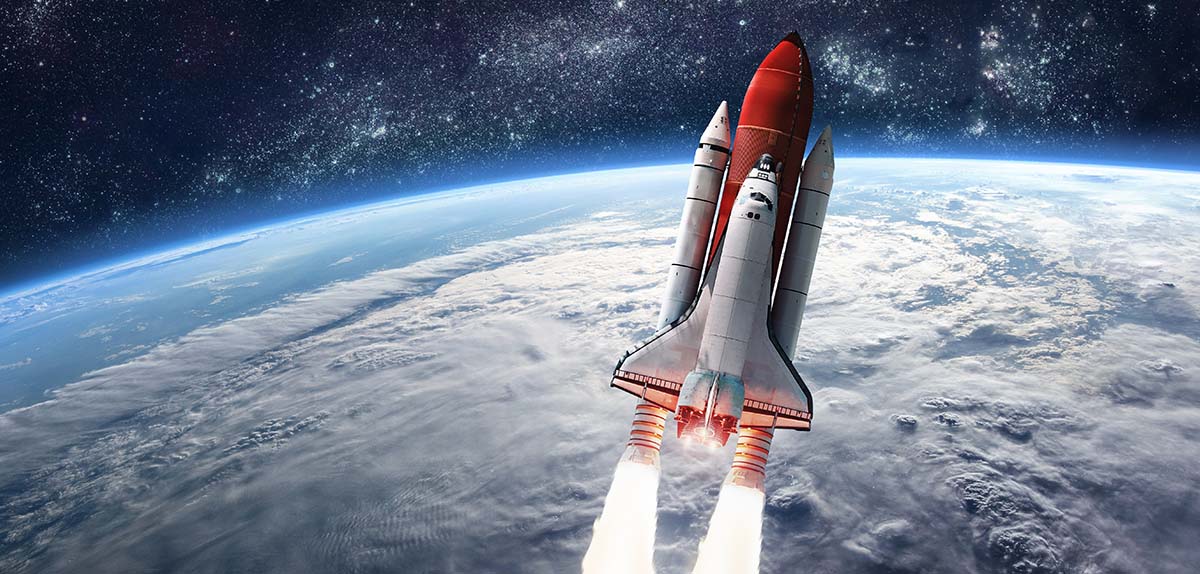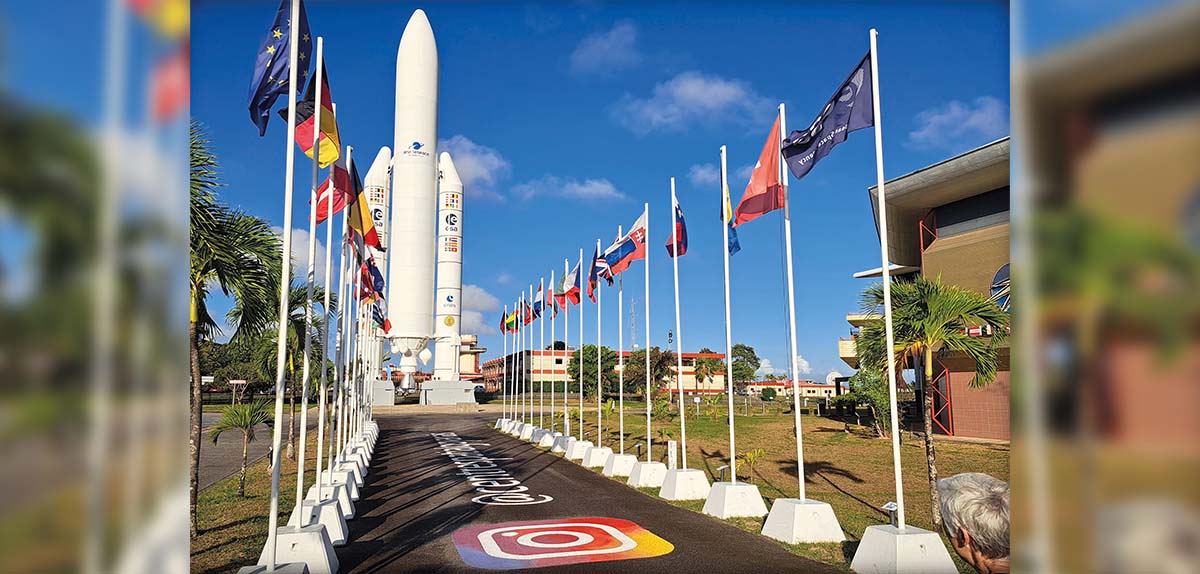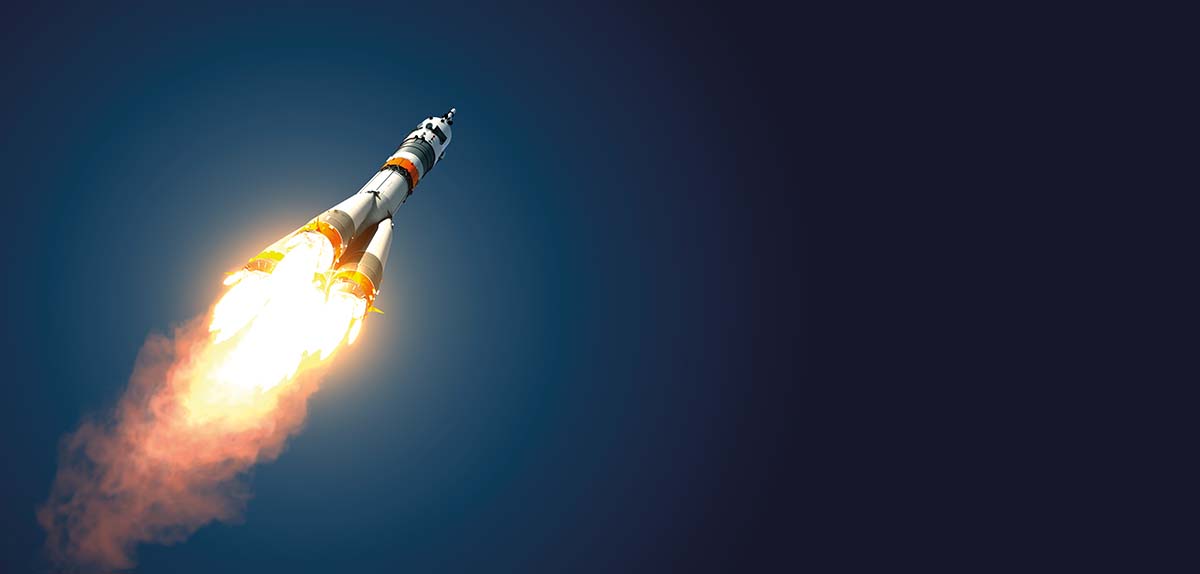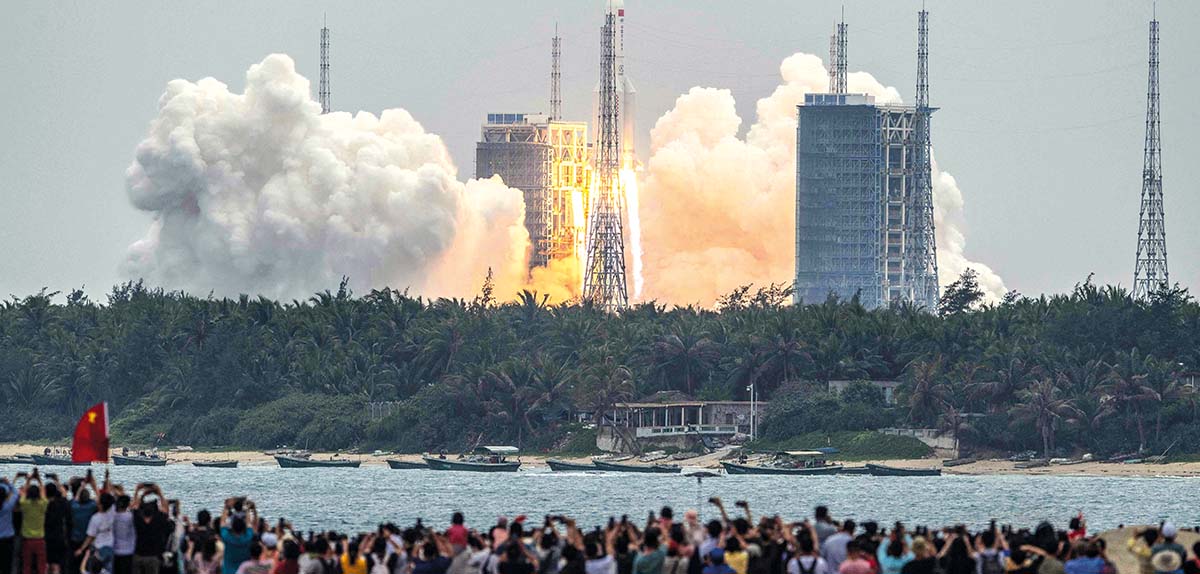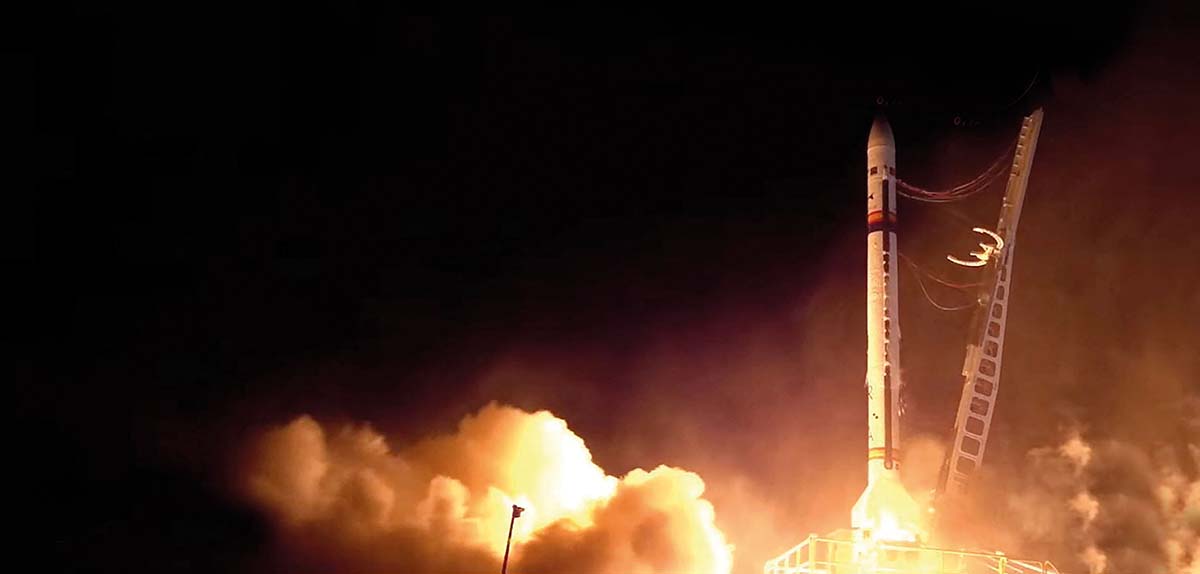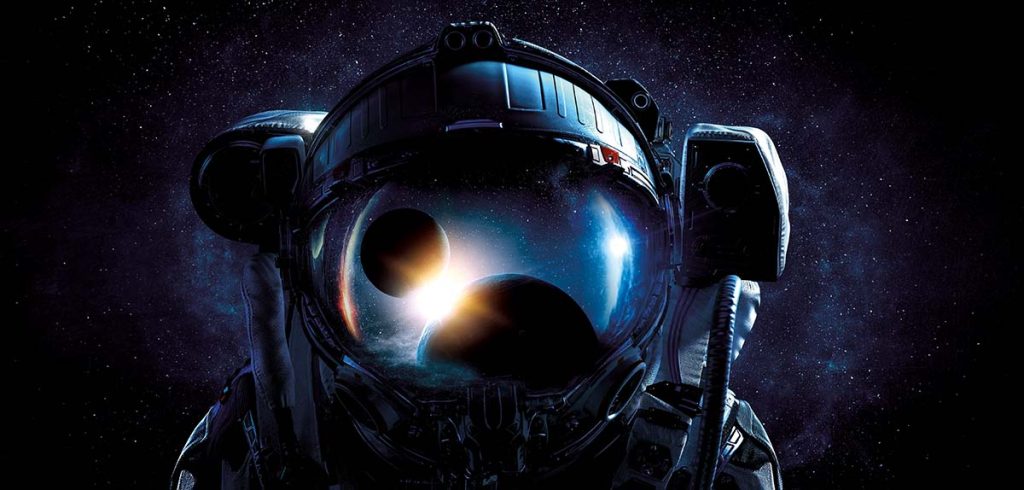The space sector has been increasingly straying away from a model of activities reserved to great powers and industrial conglomerates towards one that is more accessible, more open. The incentivization of new actors, both public and private, and the advancement of emerging space powers such as India, is breathing new life into the sector, transforming the role of the national space agencies in the process.
In little more than half a century, the industry has gone from the space race era and the historical moon landing milestone of 1969, through global cooperation, to the equally remarkable commissioning of the International Space Station. But, today, space is more wide-reaching: we are at a watershed moment for the industry, with the creation of new companies, a greater participation in academia and profound technological breakthroughs.
We could say that it is the era of commercial space. Since the turn of the century, the growth rate of private companies of the sector has more than doubled, as per data obtained by Arthur D. Little. And this makes sense, considering that the revenue generated by the space industry at large could exceed one trillion dollars by 2040, according to Morgan Stanley.
As space industry evolves, so do space agencies across the world. And new agencies are even created, as is the case of the new Spanish Space Agency.
In the beginning, they were the only actors and drivers in the sector; today, they are but a component of a much more complex mechanism a supremely important component, of course, but one that is redefining its place in an increasingly vast industrial constellation.
For this reason, the agencies are transforming the way in which they think, operate and collaborate with third parties. Now, more than ever, they are ecosystems that seek to prioritize innovation, agile models and open collaboration. Part of these efforts materialize as projects such as the advancements of the European Space Agency (ESA) towards reusable launch vehicles.
Or, in addition to projects and strategies, as milestones in the field of outreach and communication, as is the case with the launch of ‘NASA+’, the streaming platform of the American agency. It is clear that today, more than ever, space agencies seek to build bridges with industry and society.
Beyond exploration and knowledge: positive socioeconomic impact
This moment of change aside, the fact remains that space agencies enjoy a special prestige and worldwide recognition thanks to their contributions to science and exploration. From their beginnings until now, they have been an indispensable element in expanding the frontiers of human knowledge.
However, their role goes beyond that: agencies bring benefits of all kinds to the economy and society. Investment in space exploration creates quality jobs, boosts businesses and grows the economy.
In this regard, ESA estimates that for every euro invested in its programs, it attracts up to three euros of additional investment from third parties.
On the other hand, its innovations improve people’s quality of life and research in parallel fields, such as medicine and environmental protection. For example, the European Association of Remote Sensing Companies (EARSC) recently gathered quantitative evidence that the use of Copernicus Sentinel data provides effective support for various real world applications, from road design and construction (strongly affected by any ground movement, for whose monitoring the Sentinel-1 based Rheticus service was effectively employed by the Italian state road agency ANAS), to fire management, deforestation monitoring or oil spill management at sea.
In our borders, the strength of the private sector, the incorporation of two national astronauts to the European group or the investment in R&D are proof of the good health of the industry in the country. And, of course, the recent launch of the Spanish Space Agency stands out. In the country, the contribution to GDP of industrial activities in 2022 from this sector was 0.9%, a contribution that, regardless of its direct impact, positively affects in an induced way the rest of the economy and sectors.
In this regard, national space agencies have a key role to play in creating the necessary conditions to strengthen this contribution. For example, by facilitating a scenario of national and international cooperation that accompanies the challenges also global that many countries must address today.
We now turn to a review of the work of the most important space agencies with the greatest impact in the world. These include the National Aeronautics and Space Administration (NASA), the European Space Agency (ESA), the Russian Federal Space Agency (RFSA or Roscosmos), the Japan Aerospace Exploration Agency (JAXA), the China National Space Administration (CNSA) and the Indian Space Research Organization (ISRO).
NASA - National Aeronautics
and Space Administration
NASA stands for National Aeronautics and Space Administration. NASA was created on the 1st of October, 1958 as part of the government of the United States. NASA’s Mission is to drive advances in science, technology, aeronautics and space exploration to enhance knowledge, education, innovation, economic vitality and stewardship of Earth.
NASA’s headquarters are located in Washington, D.C. The agency has nine centers, the Jet Propulsion Lab and seven testing and research facilities located across several states of the country. Over 17,000 are employed at NASA.
In its beginnings, NASA undertook a crewed spaceflight program. The Mercury, Gemini and Apollo programs helped NASA learn to fly in space and led to the first human landing on the Moon in 1969. It has been one of the greatest supporters of the International Space Station.
NASA’s space probes have visited all planets of the solar system and other celestial bodies. The telescopes have enabled scientists to observe the confines of space. The satellites have revealed a vast amount of data about Earth, which has led to the obtainment of valuable information, as well as a better comprehension of meteorological patterns.
NASA’s activities have spread across a number of fields. Some of its most important achievements include:
After several proposals to replace the Space Shuttle and no shortage of political indecisions, in 2019 NASA announced the Artemis program with sights on returning to the Moon and establishing a permanent human presence.
This was strengthened by the Artemis Accords with partner countries to establish rules of behavior and space commerce guidelines for the Moon. The first mission was launched in 2022 to test the Orion capsule. The second one is set to be launched in 2024 and will include a crew.
The third Artemis mission is expected to carry a crew of four astronauts to the Lunar Gateway station, to then descend to the Moon from there.
NASA’s activities have resulted in many contributions that have transformed humanity some in the form of discoveries and others as a spin off, such us finding water on Mars, breathable oxygen on the red planet, the discovery of a very Earth like planet (Kepler 452-B), food powder, wireless headphones, mobile device cameras, and a thermal antiicing and mechanical deicing system to keep airfoils, such as aircraft wings, clear of ice.
NASA has documented over 1,500 technologies that have benefited humanity, improved quality of life and fostered economic wellbeing.
Since 2019, the United States government has had two official space organizations: NASA and the United States Space Force. Both agencies are dedicated to improving the country’s comprehension and knowledge of the new frontier, but each has a very different focus. While NASA explores new, distant worlds and sets its sights on the final frontier, the Space Force has the mission to defend freedom and monitor the borders.
ESA - European Space Agency
The European Space Agency (ESA) is Europe’s gateway to space. ESA is an inter-government organization created in 1975 through the merger of two organizations: ESRO (European Space Research Organization), established in 1962 an organization mainly focused on the development of satellites, and ELDO (European Launcher Development Organization). Its mission is to coordinate the advancement of European space capabilities and guarantee that investment in the space sector translates into benefits for the citizens of Europe and the world at large.
ESA is composed of 22 Member States and, by coordinating the economic and intellectual resources of its members, it can engage in programs and activities that would be individually unattainable by any one European country. The headquarters of ESA are located in Paris, France, though ESA facilities are highly decentralized.
ESA’s first steps included highly varied missions, such as:
Since then, Europe has played a significant part in major joint missions with NASA. In 2008, ESA’s Columbus laboratory was launched aboard the Atlantis Space Shuttle heading to the International Space Station (ISS). With it, ESA became a partner that is fully responsible for the operations and use of the ISS and, therefore, has the right to take its own astronauts in long-duration missions as members of the permanent crew of the ISS.
Among the European contributions to the International Space Station we can find five ATV (Automated Transfer Vehicle) space freighters launched in 2008 (Jules Verne), 2011 (Johannes Kepler), 2012 (Edoardo Amaldi), 2013 (Albert Einstein) and 2014 (Georges Lemaître). ATVs were used to periodically supply experiments and replacement parts, as well as food, air and water for its permanent crew, in addition to fuel to boost the orbit of the ISS.
The European Service Module is also ESA’s contribution to NASA’s Orion spacecraft, which will send astronauts to the Moon and beyond. It provides electricity, water, oxygen and nitrogen, in addition to maintaining the ship at the right temperature and providing propulsion.
In its strategy for the future, ESA includes the colonization of the Moon through international cooperation. The Lunar Gateway station and a Lunar Lander are already part of its agenda.
ROSCOSMOS
State Corporation
Roscosmos is the government agency in charge of Russian space programs and among the leading agencies in the world. Formerly, since 1992, Roscosmos was known as the Russian Aviation and Space Agency. After a restructuring process in 2015 that resulted from the merger of the Federal Space Agency and the United Rocket and Space Corporation, the Russian space industry was renationalized to create the Roscosmos State Corporation for Space Activities.
It is responsible for most of the space launches in Russia, including communication satellites and Earth observation. With the launch of the first artificial satellite, Sputnik 1, in 1957, the Soviet Union became the first country to put an object in space. Later, in 1961, it was also the first to put an astronaut, Yuri Gagarin, in space; and the first woman in space, Valentina Tereshkova, in 1963.
It has its own rocket, the successful Soyuz. While developed in the 60s, it is still among the most important rockets in spaceflight.
It was also the main proponent of the MIR Space Station and of today’s ISS.
Roscosmos also engages in the research and development of advanced technologies: new materials, flight control systems and rocket propulsion. It has an assortment of programs, both individual and in collaboration with other countries, for the research and exploration of the Moon and Mars.
Headquartered in Moscow, Roscosmos is led since 2022 by Yuri Borisov, who is facing one of the most critical stages in the Russian space race. The agency is experiencing its darkest hours due to its funding problems and geopolitical conflicts, such as the war in Ukraine, which directly impact the development and maintenance of its missions due to international sanctions.
Despite the secrecy of the Russian government on the matter, international experts warn about the precarious situation of Roscosmos as a great space power. Russia, industry analysts claim, is at risk of falling out of the great international programs; it is shunning investment on civilian space projects in favor of military ones; it is unable to keep up with the United States and China, which is compounded by technical deficiencies, as evidenced by its projects.
In summary, it is apparent that Russia is losing many of its trump cards to remain a world power in this sector. It is a fact that since the war on Ukraine began, Russian space efforts have seen more downs than ups. As a result of this conflict, the European Space Agency is among the organizations that, in 2022, decided to suspend its collaboration with the Russian Moon program. And, in response, President Vladimir Putin announced the withdrawal of Russia from the International Space Station, which implies a breakdown of the principle of international cooperation in these types of projects.
In the realm of space missions, luck has not favored Russian interests either. Last October, Roscosmos launched the Luna-25 probe with sights on making history in space once again: to become the first country to reach the Moon’s south pole. Nine days later, the probe would crash and bring Roscosmos’ lunar program into question.
While it may not be the best moment for the Russian space agency, we must not forget that its part in history has been essential in the exploration and knowledge of space and in scientific research.
Below we go over a few of its greatest milestones and achievements, without which it would not be possible to conceive space as we do today:
CNSA - China National
Space Administration
Also known as CNSA (which stands for China National Space Administration), it is the national space agency of China in charge of the national space program and responsible for the planning and execution of space activities. CNSA is an agency created in 1993, when the Ministry of Aerospace Industry was divided into the CNSA and the China Aerospace Science and Technology Corporation (CASC). It is headquartered in the district of Haidian, Beijing.
The responsibilities of the CNSA include: signing government agreements related to space on behalf of organizations, scientific and technical intergovernmental exchanges, and the implementation of national space policies and those related to national space science, technology and industry.
Crewed flights are managed by the China Manned Space Agency (CMSA) since 2015, being in charge of the Chinese crewed spaceflight program. The main responsibility of the CMSA is the unified administration of the Chinese crewed space program, which includes its development strategy, planning, overall technology, research and production, the construction of infrastructure, the planning and execution of flight missions, use and promotion, international cooperation and the publication of news, among others.
After three decades of a slow but intense development since the launch of its first satellite in 1970 (Dong Fang Hong 1 [DFH-1], launched in 24 April, 1970 aboard a CZ-1 rocket for purely propagandistic purposes, carrying a transmitter that broadcast the song “The East is Red”), China achieved a number of milestones. It put satellites in geostationary orbit, developed a rudimentary geopositioning system (Beidou) and provided launch services to other countries using its own rockets.
These developments positioned China as an increasingly relevant country in space exploration, which was proven 20 years ago when China become the third country to put humans in orbit completely independently. Aboard the Shenzhou-5 capsule launched atop a Long March 2F rocket, taikonaut Yang Liwei would inaugurate a new chapter in the space history of its country. According to Chinese authorities, this launch would become the second great milestone of its aerospace history after the first orbital launch of 1970.
Despite its short existence, the CNSA has been a pioneer in accomplishing a number of space achievements for China, such as being the first space agency to land on the far side of the Moon with Chang’e 4, bringing material back from the Moon on Chang’e 5, being the second space agency to successfully orbit and land a rover on Mars with Tianwen-1 and the creation of the Tiangong space station in 2021.
JAXA - Japan Aerospace Exploration Agency
JAXA was created in 2003 to amalgamate all space initiatives brought forward by the Japanese government. The integration of the National Space Development Agency of Japan (NASDA, established in 1969), focused on the development of large launch vehicles such as the H-IIA and satellites, as well as on the International Space Station; the Institute of Space and Astronautical Science (ISAS), dedicated to space and planetary research; and the National Aerospace Laboratory (NAL), dedicated to the research and development of next gen aerospace technologies, resulted in a continuous and systematic approach that covers from basic research to practical applications under one same roof.
It is the main agency of Japan, responsible for the research, development and implementation of technology in space. Its induction as a key player in the space sector took place in 1970, when Japan became the fourth country in the world to successfully put in orbit its first satellite (Ohsumi).
Five decades have passed since that launch an opportunity that Japan has seized to become one of the world leaders in space technologies: space science, crewed spaceflight, Earth observation and space transportation.
Rockets are among the strong suits of the Japanese space agency. It has an assortment of launch vehicles suitable for each mission.
H3 is JAXA’s next-gen flagship heavy transport rocket. It was launched for the first time in Japan’s FY2021.
H-IIA is a large scale rocket which provides supports to satellite and space probe missions, while H-IIB is a transport system used to carry supplies to the International Space Station.
Also worth mentioning is Epsilon, a solid fuel rocket designed to put satellites in orbit.
Japan has a long and renowned track-record in Earth observation, which is essential today in weather forecasting, risk and emergency management and environmental surveillance.
In 2009, JAXA launched the first Greenhouse Gases Observing Satellite (GOSAT) in the world, dubbed IBUKI. This satellite monitors global atmospheric concentrations of CO2 and methane.
Nine years later, the land of the rising sun launched IBUKI-2 (GOSAT-2) to monitor long term greenhouse gas changes, which was essential in signing the 2016 international accords to put a stop to climate change.
Space exploration is where most of JAXA’s budget and attention are focused. Out of its multiple missions, one of the most outstanding is Hayabusa2. This is an exploration mission to the Ryūgū asteroid with the purpose of determining whether it ever contained water. The spacecraft was launched in 2014 and took over three years to reach the asteroid. Small mobile units rovers landed on the surface and collected sub-surface samples.
In 2019, Hayabusa2 began its return and later delivered the samples aboard a separate capsule, which landed in the desert of Woomera, Australia, in December of 2020. The scientists are still testing the received samples.
Another mission of significant importance is PLANET-C, the first space probe launched by Japan in 2010 towards Venus, which would not arrive until 2015. Now, nearly a decade later, JAXA has billions of data points about this planet, which has the same gravity as Earth and is much closer than Mars.
JAXA is already working on an international project called Humans2Venus, which consists of the construction of a space station that could harbor about 1,000 humans by the 2050s at an altitude of approximately 50 kilometers above the surface of Venus.
The Japanese space organization is highly active in international cooperation projects: International Space Station, Artemis Program, Lunar Polar Exploration Mission (led by India) and others.
Last September, JAXA launched the SLIM probe with the objective of reaching the lunar surface. Should the mission succeed, Japan would become the fifth country in the world to accomplish that objective with a precision landing.
ISRO - India Space
Research Organisation
ISRO is India’s national space agency, headquartered in Bangalore. The Indian National Committee for Space Research (INCOSPAR) was established under the Department of Atomic Energy (DAE) in 1962, recognizing the need for space research.
INCOSPAR grew and became ISRO in 1969, as part of the DAE. In 1972, the Government of India constituted a Space Commission and established the Department of Space (DoS), which brought ISRO under DoS management. The establishment of ISRO resulted in the institutionalization of India’s space research activities.
Since then, it has been managed by the DoS, which governs many other institutions in India within the realm of astronomy and space technology.
Esta organización se dedica a la ciencia,
la ingeniería y la tecnología para cosechar
los beneficios del Espacio exterior
para India y la humanidad. Es una de las
seis agencias espaciales gubernamentales
del mundo que posee capacidades
de lanzamiento completas, desarrollo
de motores criogénicos, lanzamiento de
misiones orbitales y de operar grandes
flotas de satélites artificiales.
ISRO built India’s first satellite, Aryabhata, which was launched by the Soviet Union on 19 April, 1975. In 1980, ISRO launched the RS-1 satellite aboard its own Indian launch vehicle, SLV-3, which turned India into the seventh country to reach Earth orbit after the USSR, United States, France, United Kingdom, China and Japan. SLV-3 was followed by ASLV, later succeeded by the development of several medium-lift launch vehicles, rocket engines, satellite systems and networks that enable the agency to launch hundreds of national and foreign satellites and several deep space missions for space exploration.
The development of PSLV in the 1990s gave a significant boost to the Indian space program. With the exception of its first flight in 1994 and two partial failures some time later, PSLV had a streak of over 50 successful flights. PSLV allowed India to launch all of its LEO satellites, small payloads to GTO and over 340 foreign satellites.
With 124 missions and 94 launches, it is one of the premier space organizations in the world. Its most recent success is Chandrayaan-3, the space probe that successfully soft landed on the Moon. This makes India one of the four nations to have landed on the Moon and the first to do so in the Moon’s south pole.
ISRO was the first space agency in the world to confirm the existence of water molecules on the surface of the Moon with its three Chandrayaan missions. It has the largest remote sensing satellite constellation in the world and operates two satellite navigation systems: GAGAN and NAVIC. It has sent two missions to the Moon and one to Mars. In fact, India is the fourth nation to make it to Mars and the first one to do so without any failures. India is also known for the cost effectiveness of its missions.
ISRO was the first space agency in the world to confirm the existence of water molecules on the surface of the Moon with its three Chandrayaan missions. It has the largest remote sensing satellite constellation in the world and operates two satellite navigation systems: GAGAN and NAVIC. It has sent two missions to the Moon and one to Mars. In fact, India is the fourth nation to make it to Mars and the first one to do so without any failures. India is also known for the cost effectiveness of its missions.
Its near future objectives include expanding its satellite fleet, landing a rover on the Moon, sending humans to space, developing a semi cryogenic engine, sending more uncrewed missions to the Moon, Mars, Venus and the Sun and launching more space telescopes to orbit to observe space phenomena and outer space beyond the Solar System. Its long-term plans include the development of reusable launch vehicles, heavy and super heavy launch vehicles, the deployment of a space station, sending exploration missions to the outer planets such as Jupiter, Uranus and Neptune, as well as asteroids, and crewed missions to the Moon and planets.
India’s greatest accomplishments include missions such as:
In addition to these space agencies, over 75 governmental space agencies exist around the world. A few of them are: United Kingdom Space Agency (UKSA); Canadian Space Agency (CSA); United Arab Emirates Space Agency (UAESA) and the Australian Space Agency (ASA). All of them have played a significant part in coordinating space activities in their countries, in major undertakings such as the Solar Orbiter, CanadArm and the Hope Mars probe. Moreover, all of them have astronauts who have travelled to space.con astronautas que han viajado al Espacio.
AEE - Spanish Space Agency
All of this is also true for the Spanish Space Agency (AEE), which is particularly important since, after years of hesitation, all efforts related to space have been successfully combined into one single organization. Recently created (20 April, 2023), it is a government organization charged with contributing to national security, fostering scientific research and industry, representing Spain in international forums and coordinating national institutions in the realm of space. It is also responsible for designing and coordinating the Spanish Space Strategy.
Before its creation, the Center for the Development of Industrial Technology (CDTI) performed some duties as a space agency, such as representing Spain before the European Space Agency and managing over 80% of the government’s budget allocated to space, but it would not dictate space policies or plans, or engage in research of any kind. Space related responsibilities were distributed among five different ministries.
Nonetheless, Spain obtained a number of achievements in relation to space activities during those years. It had its own astronaut (Pedro Duque) and participated in the construction of the International Space Station (ISS) and the ATV space freighters to carry supplies. Its involvement in exploration missions has been noteworthy, providing industry knowledge in iconic projects such as Curiosity and Perseverance, Huygens, Gaia, BepiColombo, JUICE, Orion/ESM and, soon, HALO for the Lunar Gateway space station.
Another achievement that sets Spain apart from other countries that have their own space agencies is that it facilitated the creation of Telecom Operators which, in addition to offering a benefit to society, have significantly bolstered the technological development of the business sector.
All the capabilities that were garnered throughout so many years will be streamlined by giving cohesion and concentrating space policies on a single institution. Moreover, a closer relationship between scientific institutes and industry will be achieved, resulting in an understanding that serves as a foundation to formulate proposals that are more ambitious both in content and in financial breadth.
This is why, despite its short history, the Spanish Space Agency has a promising future in space with the potential to eventually rank among the world’s elite space agencies.
